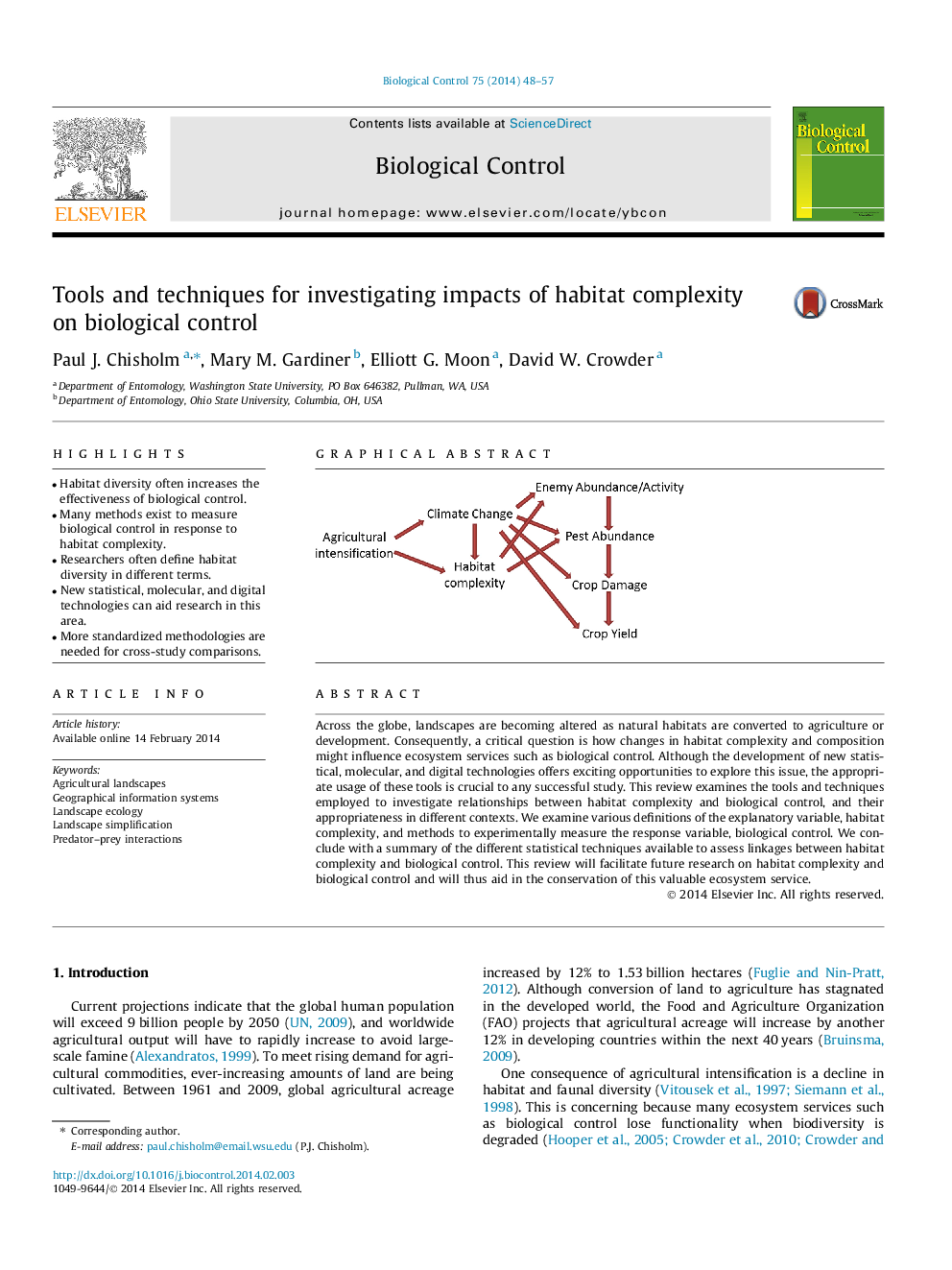| Article ID | Journal | Published Year | Pages | File Type |
|---|---|---|---|---|
| 4503902 | Biological Control | 2014 | 10 Pages |
•Habitat diversity often increases the effectiveness of biological control.•Many methods exist to measure biological control in response to habitat complexity.•Researchers often define habitat diversity in different terms.•New statistical, molecular, and digital technologies can aid research in this area.•More standardized methodologies are needed for cross-study comparisons.
Across the globe, landscapes are becoming altered as natural habitats are converted to agriculture or development. Consequently, a critical question is how changes in habitat complexity and composition might influence ecosystem services such as biological control. Although the development of new statistical, molecular, and digital technologies offers exciting opportunities to explore this issue, the appropriate usage of these tools is crucial to any successful study. This review examines the tools and techniques employed to investigate relationships between habitat complexity and biological control, and their appropriateness in different contexts. We examine various definitions of the explanatory variable, habitat complexity, and methods to experimentally measure the response variable, biological control. We conclude with a summary of the different statistical techniques available to assess linkages between habitat complexity and biological control. This review will facilitate future research on habitat complexity and biological control and will thus aid in the conservation of this valuable ecosystem service.
Graphical abstractFigure optionsDownload full-size imageDownload as PowerPoint slide
